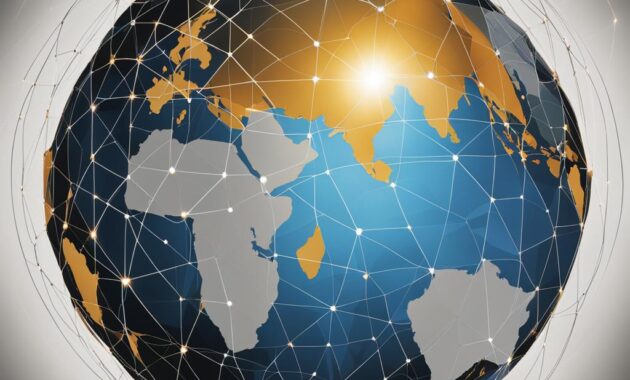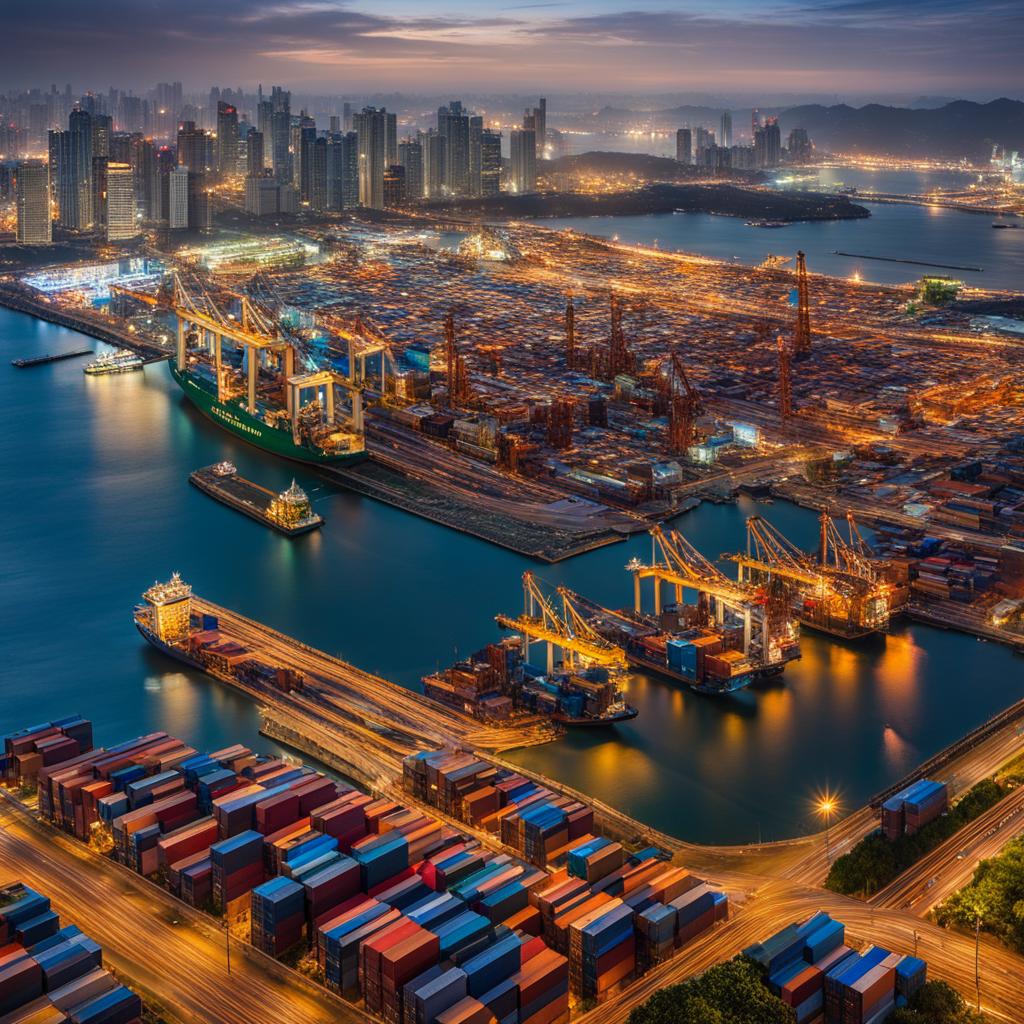Welcome to our article on global economic alliances and how they are forging stronger bonds through economic liberalization. In today’s rapidly changing economic landscapes, it is becoming increasingly important for countries to collaborate and form partnerships to achieve mutual growth and prosperity.
At the heart of these partnerships is the concept of economic liberalization, which involves the removal or reduction of trade barriers and restrictions to promote cross-border trade, investment, and entrepreneurship. By embracing economic liberalization policies, countries can unlock new opportunities, enhance market access, and attract foreign investments.
Together, these efforts create a more interconnected world and foster economic cooperation, leading to stronger global alliances. In the following sections, we will delve deeper into the concept of economic liberalization, its role in revolutionizing economic systems, and how it contributes to the formation of stronger global partnerships.
Join us as we explore the future of economic liberalization and its potential impact on the global economy. By understanding these trends, we can navigate the changing dynamics and seize the opportunities they present for growth and collaboration.
Revolutionizing Economic Systems through Liberalization
In this section, we will examine the role of economic liberalization in revolutionizing economic systems. It enables countries to unlock trade barriers, promote entrepreneurship, and attract foreign investments. As a result, the economic systems become more efficient, transparent, and competitive.
Economic liberalization is a process that involves reducing the government’s intervention in the economy, deregulating industries, and promoting market forces to shape economic activities. By adopting liberalization policies, countries can attract foreign investments, enhance their competitiveness, and diversify their economic activities.
One of the key benefits of economic liberalization is the promotion of global partnerships. As countries adopt liberalization policies, they become more integrated into the global economy, and their economic systems become more compatible with those of other countries.
A prime example of successful economic liberalization is China. In the past decades, China has transformed its economic system from a centrally planned one to a market-oriented one. The government has implemented several policies to attract foreign investments, such as tax incentives, free trade zones, and reduced bureaucratic procedures. As a result, China has become one of the world’s largest economies and a major global player in international trade.
However, economic liberalization also poses some challenges. The benefits of liberalization policies can be unevenly distributed, leading to income inequality and social unrest. Moreover, some industries may suffer from the removal of protective measures, and the environment can be negatively impacted if proper regulations are not in place.
Despite the challenges, economic liberalization is a valuable tool for countries seeking to enhance their economic systems and form stronger global partnerships. By embracing liberalization policies, countries can unlock their full economic potential and become more integrated into the global economy.
Strengthening Global Alliances through Liberalization
As we mentioned in our previous section, economic liberalization is a powerful tool in fostering economic cooperation and strengthening global alliances. Through cross-border trade, liberalization promotes market access and encourages collaboration in various sectors such as finance, technology, and manufacturing, among others.
A key benefit of economic liberalization is its ability to attract foreign investments, creating opportunities for joint ventures, technology transfer, and knowledge sharing. This not only stimulates economic growth but also enhances the competitiveness of businesses and industries.
For instance, China’s adoption of liberalization policies in the late 1970s has transformed its economy into one of the world’s largest and contributed to fostering stronger international ties. By opening up its markets and embracing foreign investments, China has built mutually beneficial partnerships with countries such as the United States, Australia, and Singapore.
Similarly, India’s liberalization policies in the 1990s helped to boost economic growth, attract foreign investments, and enhance its position in the global economy. This has led to closer partnerships with countries such as the United States, Japan, and the United Kingdom, among others.
Furthermore, the formation of regional economic blocs, such as the European Union and the Association of Southeast Asian Nations (ASEAN), are examples of how economic liberalization can lead to stronger global alliances and foster economic cooperation. Through the removal of trade barriers and the promotion of free trade, regional blocs facilitate cross-border transactions, enhance market access, and promote economic growth among member countries.
Case Study: Liberalization in ASEAN
The Association of Southeast Asian Nations (ASEAN) is a regional bloc that comprises ten member countries, including Indonesia, Malaysia, Singapore, Thailand, and Vietnam, among others. Since its establishment in 1967, ASEAN has made significant progress in promoting regional economic integration through the adoption of liberalization policies.
One of the key initiatives of ASEAN’s liberalization efforts is the ASEAN Free Trade Area (AFTA), which aims to reduce trade barriers and promote free trade within the region. AFTA has contributed to the growth of intra-regional trade, which has increased from around $40 billion in 1993 to over $500 billion in 2019.
Moreover, ASEAN’s liberalization policies have attracted foreign investments, particularly from countries such as China, Japan, and the United States. According to a report by the ASEAN Secretariat, foreign direct investment (FDI) inflows into ASEAN countries reached $155.6 billion in 2019, the second-highest level after the previous year’s record high of $156.5 billion.
The success of ASEAN’s liberalization efforts highlights the potential of economic cooperation and stronger global alliances via economic liberalization. By breaking down trade barriers and promoting free trade, liberalization can foster a more interconnected and prosperous world.

The Future of Economic Liberalization
As we look ahead to the future of economic liberalization, it is clear that this trend is here to stay. The global economy is becoming increasingly interconnected, and liberalization policies are driving this trend forward.
One important trend that is likely to shape the future of economic liberalization is digitalization. As more and more businesses move online, the importance of cross-border data flows is growing. This means that countries will need to adopt policies that promote digital trade and ensure the free flow of data across borders.
Another trend that is likely to shape the future of economic liberalization is sustainability. With growing concern over the environment, countries will need to adopt policies that promote sustainable growth and development. This includes measures such as renewable energy incentives, waste reduction initiatives, and green technology investments.
Inclusive growth is also likely to play a major role in the future of economic liberalization. As countries strive to ensure that the benefits of economic growth are shared more evenly, policies that promote social welfare and address income inequality will become increasingly important.
International Organizations and Agreements
International organizations and agreements will continue to play a critical role in shaping the future of economic liberalization. Organizations such as the World Trade Organization (WTO) and the International Monetary Fund (IMF) will continue to provide a framework for global economic cooperation and coordination.
Agreements such as the Comprehensive and Progressive Agreement for Trans-Pacific Partnership (CPTPP) and the African Continental Free Trade Area (AfCFTA) will promote economic integration and liberalization in specific regions.
| Regional Agreement | Countries Involved | Expected Economic Impact |
|---|---|---|
| CPTPP | Australia, Brunei, Canada, Chile, Japan, Malaysia, Mexico, New Zealand, Peru, Singapore, Vietnam | Estimated to increase member countries’ GDP by $147 billion by 2030 |
| AfCFTA | 54 countries across Africa | Expected to create a single market for goods and services, increase intra-African trade, and attract more foreign investment to the continent |
Overall, the future of economic liberalization is bright. As countries continue to adopt liberalization policies and develop stronger global partnerships, we can expect to see greater economic growth and prosperity around the world.
Conclusion
As we explored in this article, economic liberalization is transforming global partnerships and shaping new economic landscapes. By breaking down trade barriers and promoting mutual growth, liberalization policies are fostering economic cooperation and strengthening global alliances.
We have discussed the benefits and challenges associated with economic liberalization, as well as successful examples of countries leveraging liberalization to build stronger partnerships. As we continue to navigate the changing dynamics of the global economy, it is essential to understand the impact of economic liberalization and seize the opportunities it presents for growth and collaboration.
By staying informed and adapting to emerging trends, we can navigate these changes and build a more interconnected world, where economic cooperation and mutual growth prevail. With economic liberalization at the forefront of our discussions, we can work towards a bright future for our global partnerships and economic landscapes.




